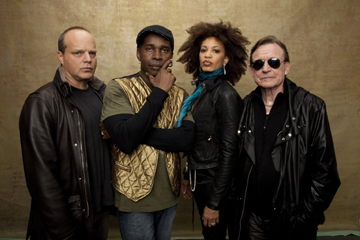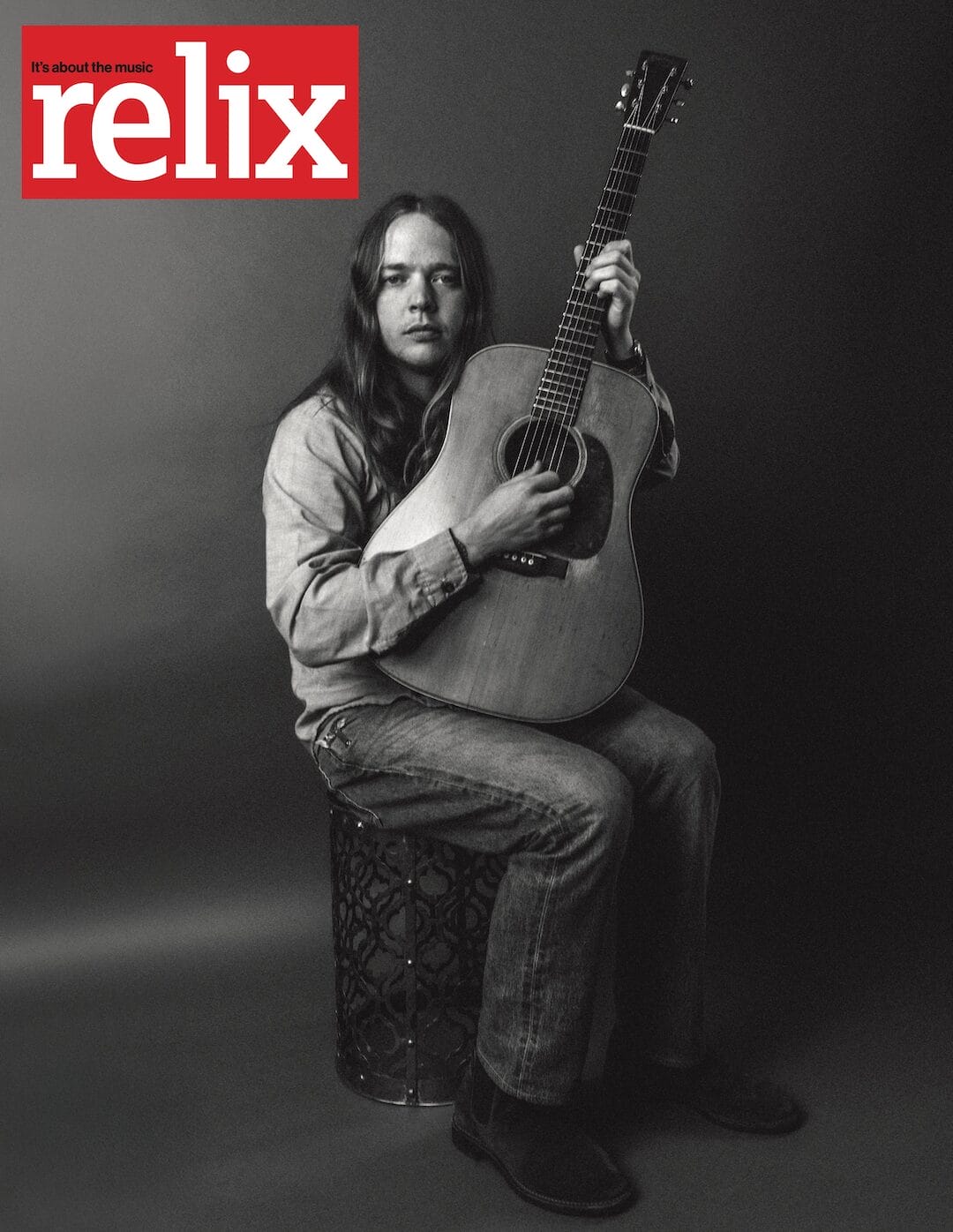Spotlight: Spectrum Road (John Medeski, Jack Bruce, Cindy Blackman Santana and Vernon Reid)

Turn It Over from 1970, the second album from The Tony Williams Lifetime, came with instructions on its jacket: “Play it loud. Play it very, very loud.” To some, the request was disturbing – Williams had just wrapped a five-year stint drumming for Miles Davis’ so-called “second quintet,” one of the premier acoustic jazz groups of the ‘60s. But for those who had caught Lifetime’s first LP, 1969’s Emergency!, the message was clear: Jazz had gone rock and Lifetime was leading the way.
Originally featuring guitarist John McLaughlin, organist Larry Young and Williams on drums and vocals, Lifetime was a chaotic, murky place, filled with screaming six-strings, menacing B3s, bold, bruising percussion and hip, mysterious singing.
The addition of Cream bassist Jack Bruce in 1970 brought with it a deep, melodic rumble – not to mention credibility with rock audiences. Intrigued by a pre-Bruce live show, Miles invited Lifetime to start backing him. Williams passed, but both he and McLaughlin recorded on In a Silent Way (1969) and Young and McLaughlin played on Bitches Brew (1970).
Miles, however, was not the only one impressed with Lifetime. As a kid, Living Colour guitarist Vernon Reid was blown away by the band – so much that when he wound up touring with Jack Bruce in 2001, he suggested that he and the bassist bring an ensemble together to explore that music again. To fill out the band, Reid thought of two other Lifetime/Tony Williams devotees: keyboardist John Medeski and drummer Cindy Blackman Santana. The quartet finally came together in 2008, naming themselves Spectrum Road after the Lifetime song “Via the Spectrum Road.”
“Jazz-rock really started with Tony Williams,” declares Reid. “And that sound really started with Lifetime. The thing that was deep was that Miles actually hired John McLaughlin away from Tony Williams.”
Williams, in particular, has been an inspiration to Reid. Seeing the drummer, who died in 1997, was a peak experience.
“He’s so freely expressive,” gushes Reid. “He’ll do things that are like, ‘There’s no way he’s gonna get out of this!’ He’s the only drummer I’ve seen live who played a drum fill where the audience burst into spontaneous applause.”
Larry Young was as much an influence on Medeski as Williams was on Reid. For one thing, Young’s playing was Medeski’s first exposure to the Hammond B3, an instrument that would serve the keyboardist well in Medeski Martin & Wood.
“He was an incredible jazz player, but he also explored the sonic possibilities of the instrument,” says Medeski of Young. “[He was a] huge inspiration.”
One of the highlights of Spectrum Road for Medeski, though, is getting to play with Bruce. The experience has given him a new perspective on a seminal band.
“I’ve realized after playing with [Bruce], that he is the driving, pushing force behind Cream’s really long jams,” says Medeski. “Jack does not let you stop. Your solo is over when Jack lets you resolve. It’s like surfing a big wave.”
An early pinnacle on Spectrum Road’s self-titled debut, out this June on Palmetto Records, is the band’s take on Williams’ “There Comes a Time,” with Bruce on vocals. Tasteful shredding, enveloping organ and propulsive, insistent drumming decorate cryptic lines like “I love you more when it’s over” and “I love you more when you’re spiteful.”
“Nobody got that he was alternative rock very, very early on,” says Reid. “His best-known song of that period – and I guess the most iconic song – is ‘There Comes a Time.’ And it’s a classic. It points the way to Radiohead.”
But the musicians who live on Spectrum Road aren’t interested in merely recreating the songs of Lifetime. The tunes are jumping-off points, from which the players can say what they have to say.
“For me, it’s really about being inspired, and trying to understand where they were coming from,” says Medeski. “Not just playing the notes and the rhythms they did.”




















